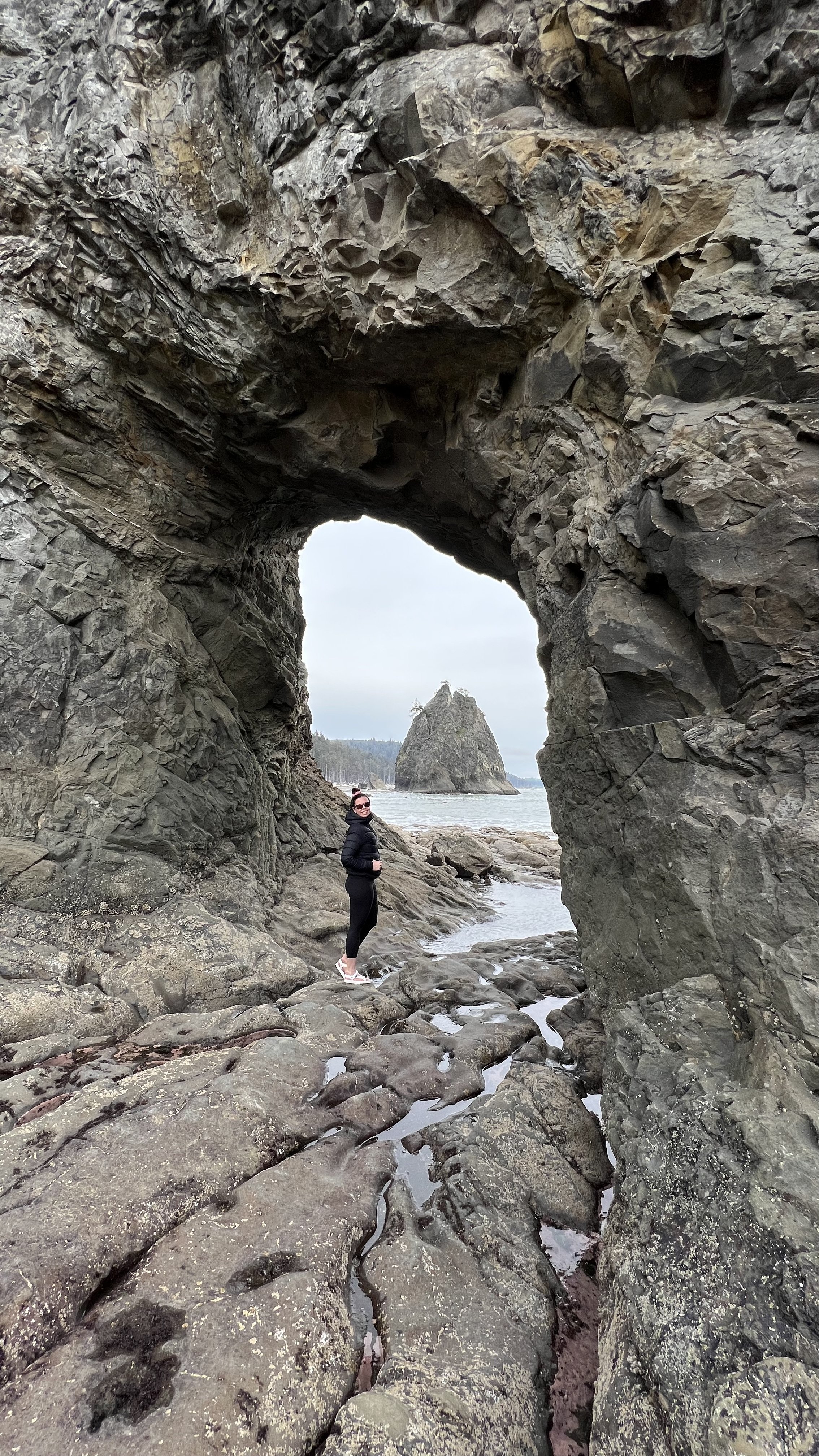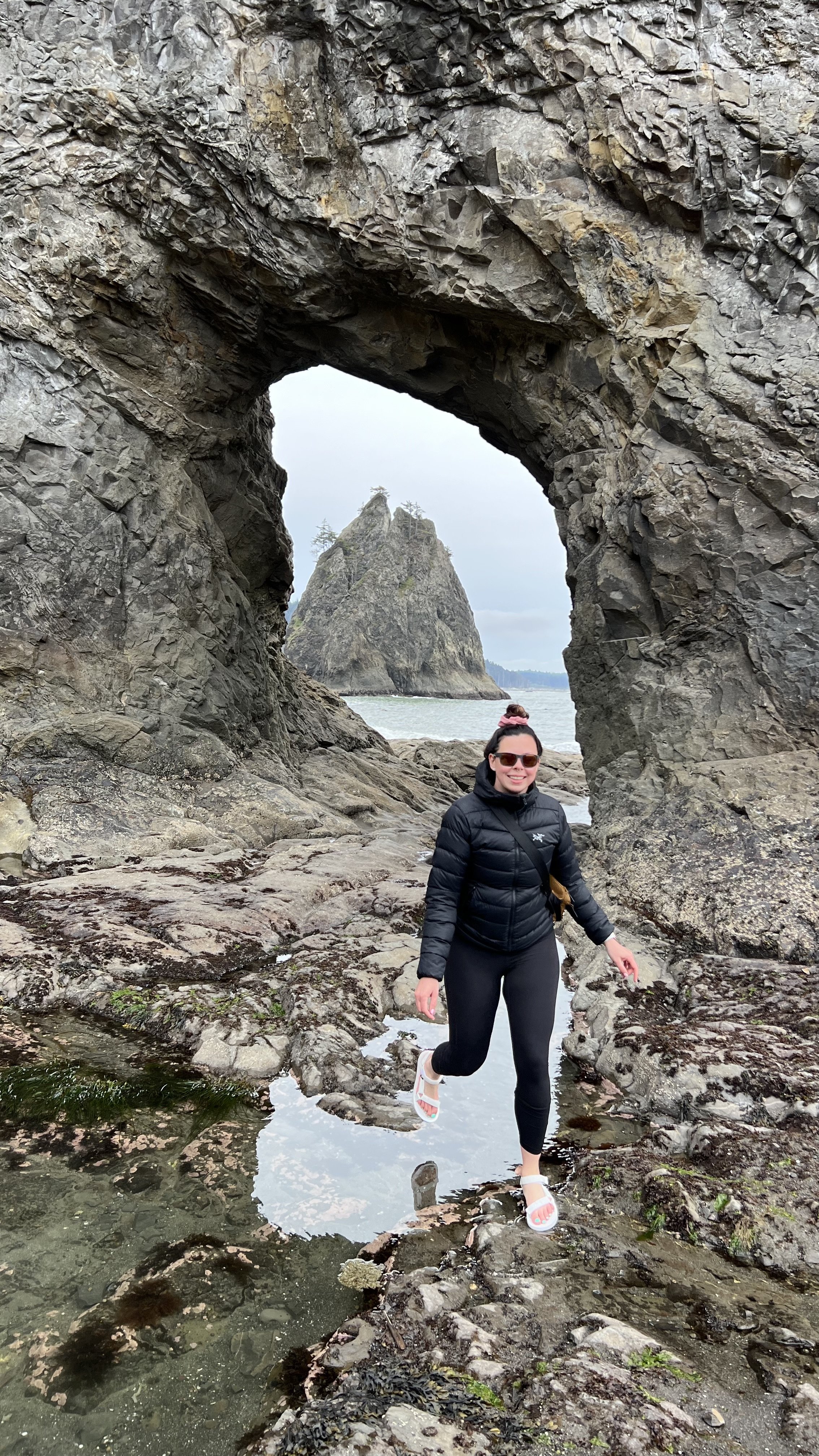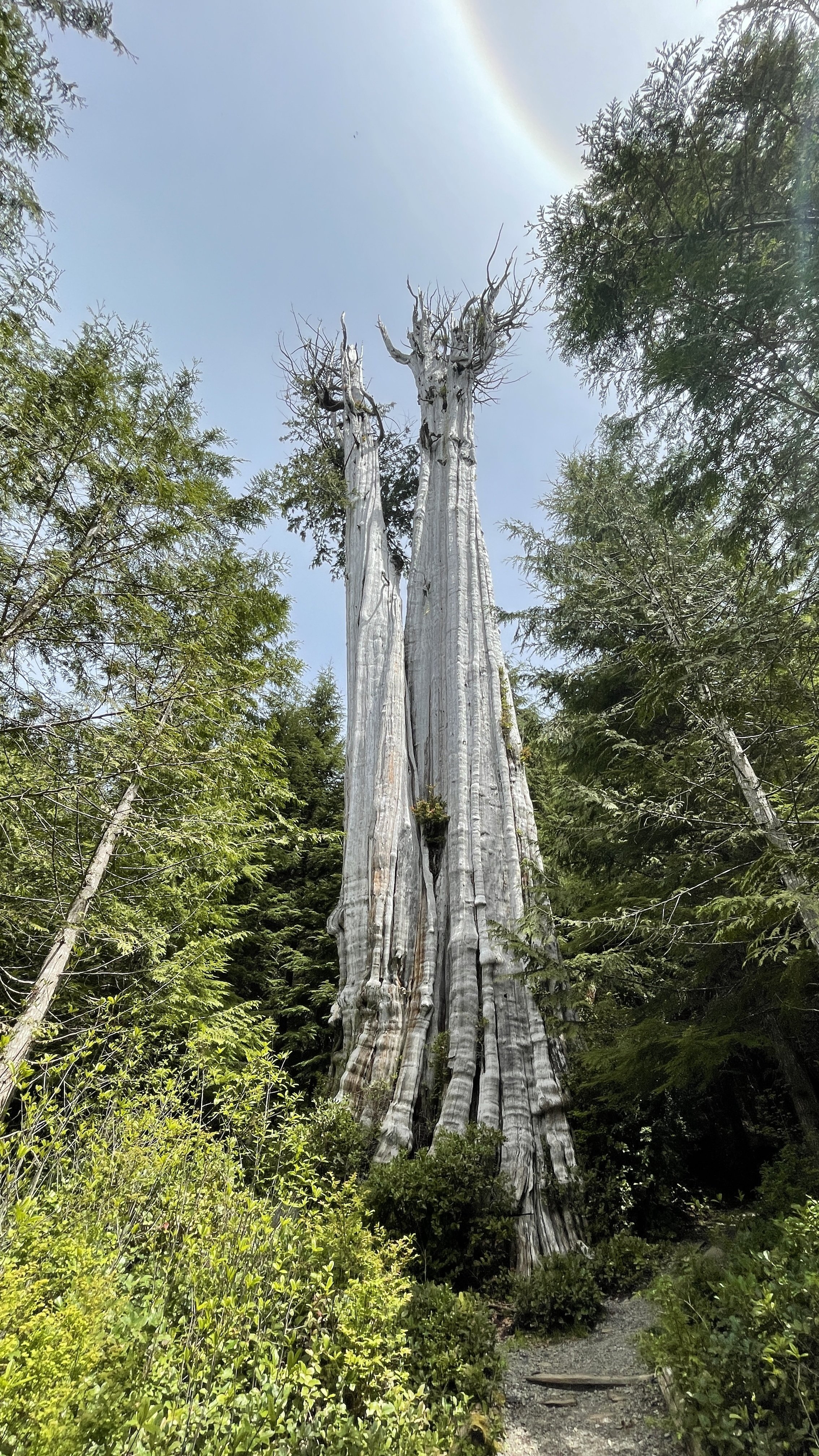Olympic National Park, Washington
When I think about National Parks in Washington, North Cascades is always the first one that comes to mind. US Highway 20 is one of my favourite scenic routes and I love all the breathtaking views, roadside lookouts and little towns along the way - I’ll spare the details for another blog post.
That being said, it turns out that we’ve been overlooking another Washington gem all this time - Olympic National Park. We finally decided to check in out last May and let’s just say - we were blown away!
Nestled in the pristine wilderness of Washington State, Olympic National Park is a nature lover's paradise. Spanning nearly a million acres, this UNESCO World Heritage Site boasts diverse ecosystems, from rugged coastlines and ancient forests to glacier-capped peaks. It was like nothing we had seen before, so much diversity in one park.
Whether you're an avid hiker, a wildlife enthusiast, or simply seeking solace in nature's embrace, Olympic National Park offers something for everyone!
Getting to Olympic National Park:
Planning Your Route:
Before embarking on your journey, it's essential to plan your route. While Olympic National Park is easily accessible from BC it does require a bit of pre-planning due to the boarder crossing and ferry routes.
The most common route involves driving south through the Fraser Valley, crossing the border into the United States, and continuing on towards the park, taking either the Coupeville to Port Townsend or the Edmonds to Kingston ferry route.
Washington State Ferries Route Map
Washington State Ferries Info - Sailings, Reservations and Tickets
Prepare to spend roughly $25.00 - $35.00 USD for a vehicle and two adults for each sailing.
Crossing the Border:
Crossing the border from Canada into the United States is a straightforward process, but it's essential to have the necessary documentation in order. Make sure to have your passport, visa (if required), and any other relevant travel documents ready.
The Peace Arch Border Crossing, located south of Vancouver, is a popular crossing point and typically experiences moderate traffic. Plan your crossing time accordingly to avoid long waits. Living in Abbotsford we prefer the Sumas boarder crossing which is generally a lot quieter and quicker to cross.
The Scenic Drive:
Once across the border, prepare to be enchanted by the scenic drive ahead. From the border, the drive to Olympic National Park takes approximately four to five hours, depending on traffic, ferry delays and road conditions. As you journey southward, you'll pass through charming towns, farmland, and dense forests, each offering its own unique charm. It’s important to pick your ferry in advance and book a reservation if available.
We chose the Edmonds to Kingston ferry on the way down as we were staying near Lake Crescent and then looped around the South of the park on our last day crossing back into Seattle further South.
Pit Stops Along the Way:
While the drive itself is beautiful, consider making some pit stops along the way to break up the journey and explore the surrounding areas. Depending on your ferry route - Port Angeles, located near the most northern entrance to Olympic National Park, is a popular stopover point. Here, you can stretch your legs, grab a bite to eat, and take in stunning views of the Strait of Juan de Fuca and the Olympic Mountains.
Park Fees:
Entrance Fee:
The entrance fee to Olympic National Park is $30 per vehicle for a seven-day pass. Alternatively, you can purchase an annual pass for $55, providing unlimited access to the park for one year.
If you plan to go to multiple parks in a year there is also the America the Beautiful Pass which allows access to all US National Parks for one year for $80 USD. We usually opt for this option as we do along of National Parks travel in Matt’s off-season.
Camping Fees:
Campground fees vary depending on the location and facilities. Prices range from $15 to $22 per night for tent sites and $20 to $30 per night for RV sites.
Backcountry Permits:
If you plan to backpack or camp in the wilderness, you'll need to obtain a backcountry permit, which costs $8 per person per night.
Because we travelled in May we didn’t take the opportunity to check out any of the camping or backcountry options but will definitely be back!
Where to Stay:
Campgrounds:
Olympic National Park offers several campgrounds for both tent and RV camping, including the popular ones at Kalaloch, Hoh, and Sol Duc. Reservations are recommended, especially during peak season. Camping is open from May 16 - September 30, 2024
Full details on camping options, reservations and fees can be found here.
Lodges:
For a more comfortable stay, consider booking a room at one of the park's lodges, such as Lake Crescent Lodge, Sol Duc Hot Springs Resort, or Kalaloch Lodge. These rustic accommodations offer modern amenities amidst breathtaking natural surroundings.
Nearby Accommodations:
If you prefer to stay outside the park, nearby towns like Port Angeles, Forks, and Sequim offer a range of lodging options, from quaint bed-and-breakfasts to budget-friendly motels.
For this trip we stayed in an AirBnb on Lake Sutherland which is right next to Lake Crescent.
Trails:
Mount Storm King:
Distance: 6.6km roundtrip
Elevation Gain: 642m
Type: Out & Back
Difficulty: Hard Hike
Location: Lake Crescent, WA
Access: Paved Road
Mount Storm King is one of the most popular trails in Olympic National Park - and for good reason. It provides stunning views of Lake Crescent with the BC Coast Mountains off in the distance. The trail itself, while relatively short, is not for the faint of heart.
The trail ascends steeply for the initial 3.2 kilometers (2 miles) until reaching an "End of Maintained Trail" marker. Beyond this point, the trail is not maintained by Olympic National Park.
The final 0.4 kilometers (1/4 mile) entails navigating a rocky path equipped with a series of ropes. These ropes, designated for one hiker at a time, aid in ascending and descending this particularly steep and exposed section.
Keep in mind, these ropes are not maintained by the park, and their usage should be exercised with personal discretion.
While we personally felt comfortable undertaking this hike with our toddler in a backpack carrier, individuals with a strong fear of heights may wish to research further into the trail's specifics.
Parking is available near the Storm King Ranger Station on Lake Crescent. However, during the summer season, parking spaces tend to fill up rapidly. To ensure easier access, consider arriving early in the day or during the late afternoon.
Hurricane Hill Trail:
Distance: 5.5km roundtrip
Elevation Gain: 252m
Type: Out & Back
Difficulty: Moderate Hike
Location: Hurricane Ridge Visitor Centre, WA
Access: Paved Road
Located in the heart of the park, this moderate 5.5km paved trail offers breathtaking panoramic views of the Olympic Mountains and the Strait of Juan de Fuca. Ideal for wildflower enthusiasts, the trail dazzles with vibrant blooms during the summer months.
Note: As one of the most easily accessible locations in the Olympic Peninsula (under an hour from Port Angeles), this day hike is a popular option for visitors.
The trail is usually free of snow from July through September. The ridge is open to skiing during the winter months.
Hall of Mosses Trail - Hoh River:
Distance: 1.8km roundtrip
Elevation Gain: 25m
Type: Loop
Difficulty: Easy Hike
Location: Hoh River Visitor Centre, WA
Access: Paved Road
Venture into the lush temperate rainforest along the Hoh River. This 1.8km round trip journey leads you through moss-draped trees, fern-lined pathways, and the ethereal Hall of Mosses.
This trail, while just a mild leg-stretcher for most was definitely worth the stop. We would love to come back and do the complete Hoh River Trail at some point but the Hall of Mosses trail is a great starting point to experience this part of the park and the drive to the visitor center is beautiful in itself!
Hole-in-the-Wall from Rialto Beach Trail:
For a quintessential Pacific Northwest experience, head to Rialto Beach.
Distance: 5.3km roundtrip
Elevation Gain: 33m
Type: Out & Back
Difficulty: Moderate Hike
Location: Rialto Beach, WA
Access: Paved Road
This easy 5.3km beach stroll takes you along a rocky coastline adorned with sea stacks, tide pools, and driftwood-strewn shores.
Walking in the sand for this long was surprisingly harder than we expected but the Hole-in-the-Wall formation was pretty cool to see. and worth the journey. Be mindful of tides.
Sol Duc Falls:
Distance: 2.6km roundtrip
Elevation Gain: 69m
Type: Out & Back
Difficulty: Easy Hike
Location: Joyce, WA
Access: Paved Road
Accessible via a short hike from the Sol Duc Hot Springs Resort, Sol Duc Falls cascades dramatically through the forest, offering a picturesque setting for photography and relaxation.
Roadside Attractions:
Lake Crescent:
A shimmering jewel nestled amid old-growth forests, Lake Crescent offers opportunities for boating, fishing, and scenic drives along Highway 101. Stop by the historic Lake Crescent Lodge for a meal or a leisurely stroll along the shores.
Lake Crescent from Mount Storm King
Ruby Beach:
Marvel at the rugged beauty of Ruby Beach, renowned for its sea stacks, tide pools, and stunning sunsets. Take a leisurely walk along the shoreline or simply bask in the serenity of this coastal wonderland.
The Duncan Cedar:
Also known as the Duncan Memorial Cedar and the Nolan Creek Tree, is a large specimen of Western redcedar. The tree is located on the Olympic Peninsula in the U.S. state of Washington. It is currently the largest known Western redcedar in the world.
With its stunning landscapes, diverse wildlife, and myriad recreational opportunities, Olympic National Park beckons adventurers from near and far. Whether you're embarking on a challenging hike, exploring scenic drives, or simply immersing yourself in the tranquility of nature, a visit to this majestic wilderness is sure to leave you awe-inspired and rejuvenated.
Gear:
I’ve put together a Day Hiking Checklist with a complete list of gear recommendations.
And as always, here’s a few reminders for recreating responsibly from the team at Leave No Trace:
Rules for exploring our beautiful backyard:
Plan and prepare:
Plan your travel route
Get your National Parks Pass
Check the weather
Fill out a trip plan (check out AdventureSmart for more information)
Be considerate of other visitors:
On narrow trails, give way to uphill hikers.
Take breaks on durable surfaces off the trail.
Give freedom for the sounds of nature. Avoid excessive noise.
Pack out what you pack in, and help clean up the trails on your adventures.
And most importantly, have fun!
Parks Website:
Disclaimer: This blog post may feature some affiliate links, which means I get a small commission if you make a purchase (at no extra cost to you). It’s one of the ways I can keep producing free guides and resources for my readers. Thank you for the support!























